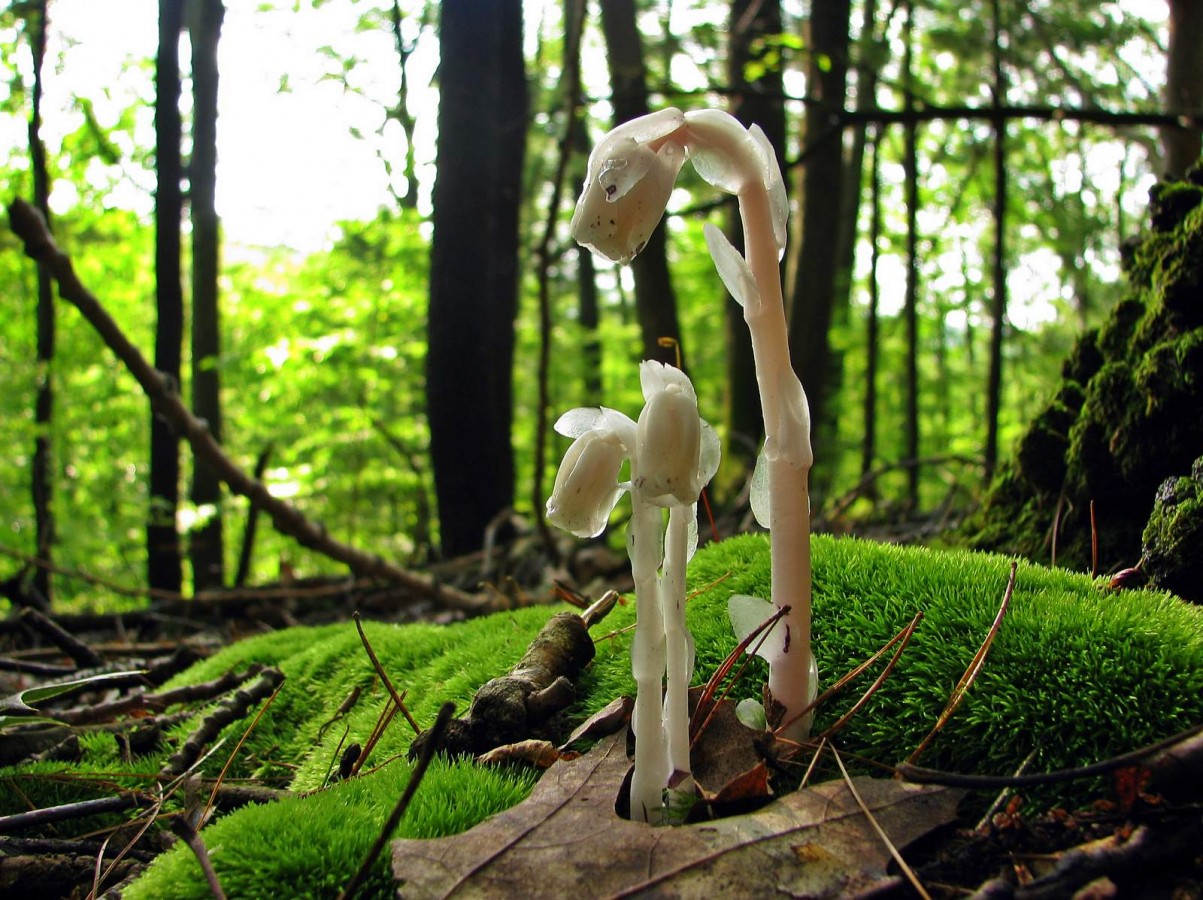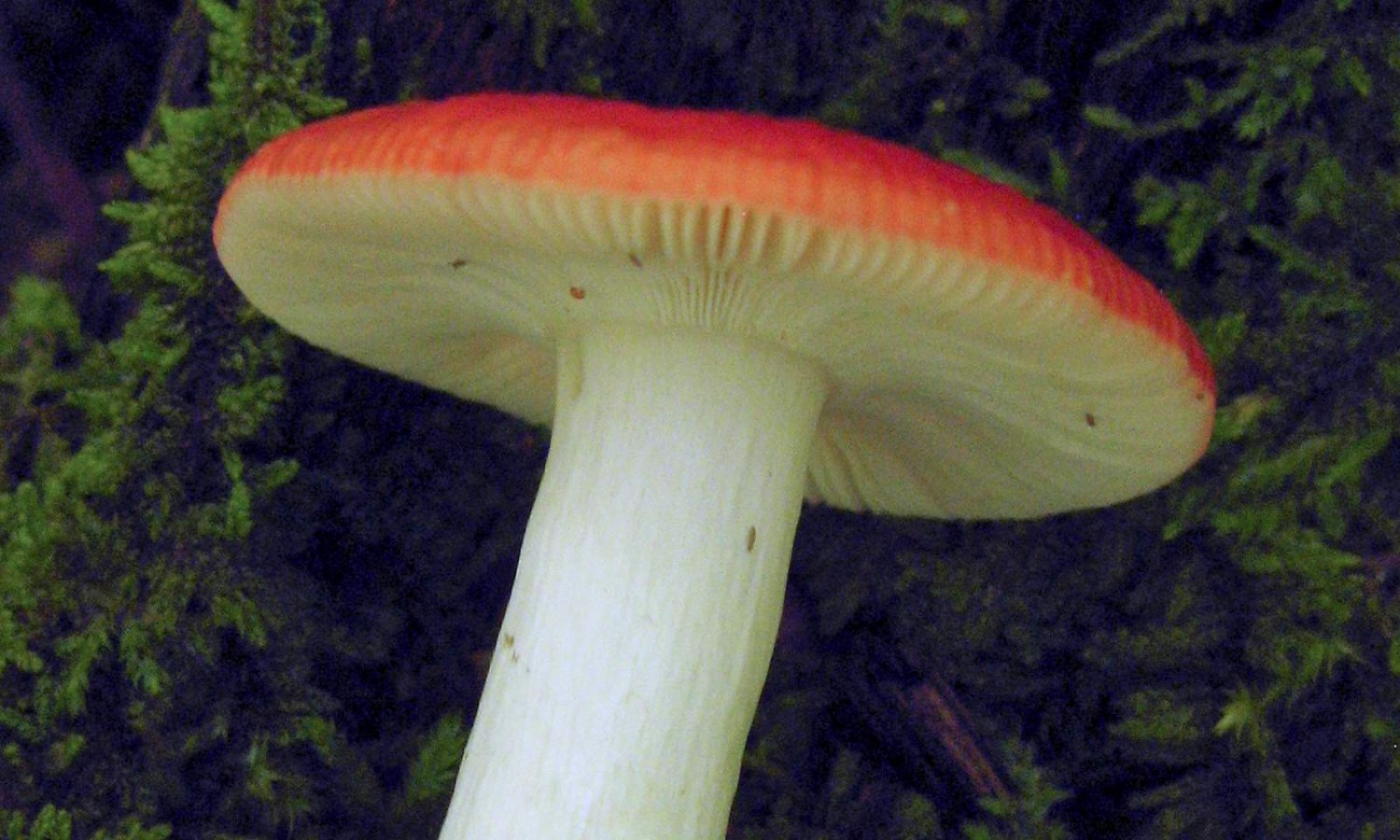This was a great summer for Ghost Pipes (Monotropa uniflora). These plants bloomed everywhere, cool and pale, lighting the forest floor with their odd nodding flowers. Aboveground, they are striking and ethereal. Happy bumblebees visit Ghost Pipe flowers for nectar, and incidentally transfer pollen on their furry heads.
Gradually the flowers blacken, stiffen, and stand up like poppy pods. By the end of the season, the plants are shakers full of tiny seeds. All that sounds normal enough, for a flower. But it’s underground that something surprising is happening. You may have heard that Ghost Pipes are parasites of trees. It’s true that Ghost Pipes are parasites, but not of trees. They are parasites of the underground mycelium of mushrooms.
Yes, mushrooms. Ghost Pipes tap into a vast underground network of mycorrhizal fungi, which some call “nature’s internet.” A great many kinds of fungi make up this network. Their invisibly fine mycelium connects with the tips of tree roots, and grows out through the surrounding soil to scavenge nutrients. Most familiar forest mushrooms are the fruits of these fungi: chanterelles, boletes, and amanitas, among others.
It’s a pretty sweet deal; trees contribute up to a fifth of the sugars they make through photosynthesis to their fungal partners. The fungi pay back in gifts of water, nutrients like phosphorus and nitrogen, and protection from disease. Almost all forest plants participate in mycorrhizal networks, collaborating with multiple kinds of fungi all at the same time. The network is supported by big trees, and nurses little ones until they get going.
Pale Ghost Pipes aren’t green because they don’t photosynthesize; they make no sugars to contribute to a fungus partner. However, they have cleverly persuaded fungi to donate both sugars and nutrients without receiving anything in return.
A Ghost Pipe’s favorite partners are species of Russula and Lactarius. These charming and distinctive mushrooms come in an array of pleasing colors and would seem easy to identify. They have brittle flesh, neat, attached gills, and white, spiky spores. Most field guides will try to convince you this red one is Russula emetica. But most guides conveniently leave out all the other red ones—dozens of species of them— that differ in the subtlest ways. The incredible diversity of mycorrhizal Russula species has so far defeated all the mycologists who would like to put them in order. Presumably a Ghost Pipe knows its friends better than your average taxonomist.
Dig up a Ghost Pipe and you’ll find a gnarled ball of stubby roots. They are mycorrhizal roots colonized by a Russula or a Lactarius. If you had super microscope eyes you could zoom in and see that the fungus and plant have together created special root tips built for nutrient exchange. The fungus pokes into root cells in the same way you’d poke your finger into a balloon without bursting it—that close connection is where the sugar and nutrients flow. Zoom out again, way out, and you’d find that same fungus connected to one or more different trees, and maybe it’s made a cheerful red mushroom to disperse its spores too.
You might know some other nonphotosynthetic plants in our woods: Bear Corn (Conopholis americana) and Beechdrops (Epifagus americana) attach directly to the roots of oaks and beeches without any need for fungi. But like Ghost Pipes, almost all orchids begin their lives completely dependent on mycorrhizal fungi, and only later develop the ability to photosynthesize… a story for another day.
Some have denounced Ghost Pipes as creepy—for their thievery and their deathly whiteness. That seems unkind to me; I think parasites play important roles in nature. Anyway, our understanding of mycorrhizal networks is new and growing. It’s clear these networks have enormous impacts on both forest and agricultural ecosystems, and therefore the functioning of planet Earth. When you next meet a Ghost Pipe, let it remind you of the beautiful and unseen collaboration happening under your feet.



